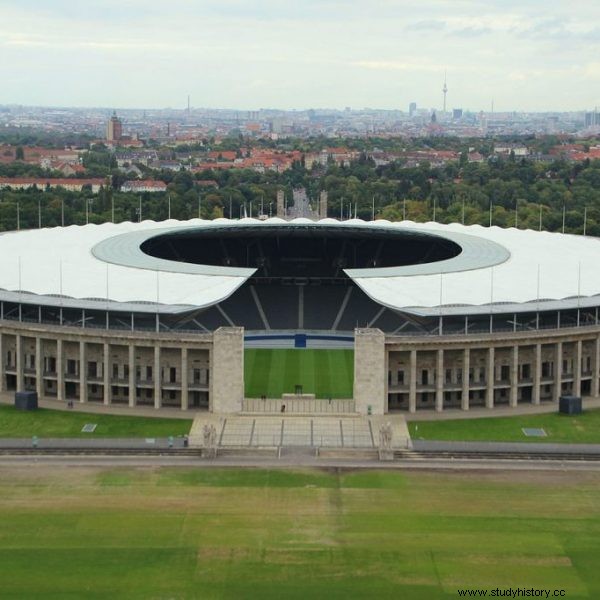The 1936 Summer Olympics in Berlin were one of the biggest propaganda events in modern history. The Nazi German regime took advantage of this event to promote itself in the world and whitewash its public image in Western countries. Undoubtedly, the genius of propaganda minister Joseph Goebbels made it possible for this event to continue to be remembered even today as one of the best organized in contemporary history.
The designation of Berlin as an Olympic city
The Nazi party was not responsible for the appointment of Berlin as the Olympic venue for the 1936 games. The designation had been made in 1931, two years before the Nazi seizure of power. At this time, the already moribund Weimar Republic managed to get Berlin designated as the Olympic venue.
The appointment of Berlin for the celebration of the Olympics had not been accidental. Since the signing of the Versailles peace treaty in 1919, Germany had become a pariah state in Europe. Germany wanted to once again become a major player in European and world affairs, and to do so it first had to be recognized as an equal by the victorious powers of the First World War.
The main promoter of the designation of Berlin as an Olympic city was the president of the German Olympic Committee, Theodor Lewald. Lewald was a Jewish convert to Protestantism. Despite this, he did not hesitate to collaborate with the Nazis to organize the games in 1936.

As part of this policy of reconciliation, Berlin was named the Olympic venue for 1936. This designation began to pave the way between the former enemies and represented a small step towards the total normalization of international relations. But all this changed on January 30, 1933. The seizure of power by the Nazi party was sudden and by March of that same year, they had already managed to put an end to any type of internal resistance to their new regime. The Nazi revolution was quick and efficient.
At first, Hitler himself considered rejecting the celebration of the Olympics in Berlin, considering them a symbol of moral decadence by allowing the participation of people of different races. However, propaganda minister Joseph Goebbels quickly realized the international projection of the event and convinced Hitler that holding the games would be highly beneficial to the new regime of Nazi Germany.
The great propaganda project
The organization plan for the games takes off in April 1933. At this time Hitler, already convinced of the benefits that the games will bring to the new Germany, directs Goebbels to organize everything.
Immediately 6 million Reichsmarks are allocated for the initial preparations, which is equivalent to 54 million euros today. In December, the construction of the Olympic stadium in Berlin is approved, which must be the largest stadium in the world.
The location of the stadium is loaded with symbolism. In the same place where the Olympic stadium in Berlin stands today was the old German stadium, a sports venue from the end of the 19th century that had been renovated for the celebration of the 1916 Berlin Olympics, games that were never held for the outbreak of the first world war in 1914.
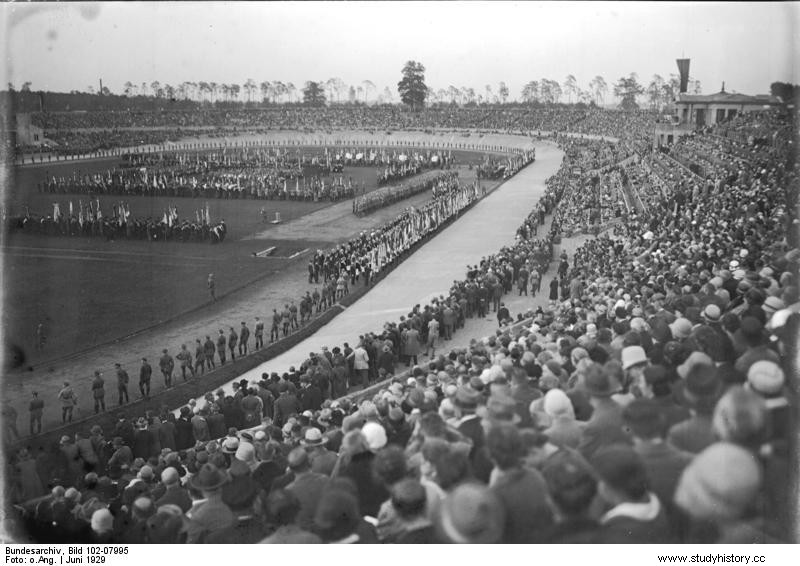
Construction work on the new stadium began quickly. Nazi propaganda used the images of the works to show their good work and the strength of the new German regime. It was also a way to drastically reduce unemployment in the Berlin region. In order to provide as many jobs as possible, the construction of the Olympic facilities had as little machinery as possible. Almost all the work was done by hand with the simple help of the strength of German workers.
The facilities where sports competitions would be held would not be the only ones built on a grandiose scale. The Olympic village in Berlin had to be in keeping with the grandeur of the new regime. On the outskirts of the city, Nazi Germany built a small town where athletes from different countries could relax and train. Modern apartment buildings, small houses with gardens and all kinds of communal facilities were built from scratch in a very short time.
The construction of the Olympic village took two years of intense work, from the spring of 1934 to April 1936. It is estimated that 2,000 workers worked on the construction of the village. The workers were all racially pure from the perspective of German law, since to get a job it was necessary to present the certificate of racial purity.
The construction of the Olympic village in Berlin was financed by the Ministry of War, since the facilities would become a military barracks after the games were held. The construction was directed by Captain Wolfgang Früstner, who had many places in the town decorated with military motifs.
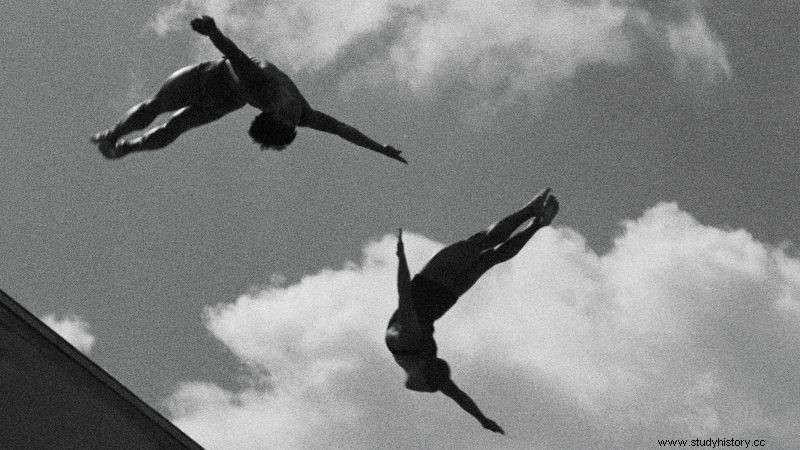
An Aryan Olympic Games
In September 1935 the Nuremberg Racial Laws were passed. These laws legally determined the race of people. In this way the so-called inferior races were separated from the German Aryans. Although intended to clearly separate Jews from the rest of the population, they also affected gypsies and Slavs.
These laws caused the decline in German sports teams. Many athletes were legally Jewish, although many were unaware of that background, so they were excluded from competitions. Not only the athletes suffered the purge. The president of the German Olympic committee Theodor Lewald, architect to a large extent of the designation of Berlin as Olympic venue, was dismissed. The director of the Olympic village, Captain Wolfgang Früstner was also dismissed, since it was discovered that he had Jewish ancestors, although he himself was unaware of this fact. Früstner could not resist the dishonor and two days after the end of the games he committed suicide by shooting himself in the head in front of the lake that is located in the center of the Olympic Village.
The greatest games in history
Despite attempts to boycott the games in Nazi Germany as contrary to the Olympic spirit of equality between races and human beings, the Berlin Olympics were held in style in the summer of 1936.
Between August 1 and 16, 1936, hundreds of athletes from all over the world competed in the sporting events at the Berlin facilities. The tests were held in unbeatable weather and in a festive atmosphere. The entire city had been decked out to welcome foreign visitors.
The propaganda apparatus of Nazi Germany took advantage of the occasion to make all kinds of reports. Leni Riefensthal was in charge of shooting the documentary film that would immortalize such a great event. The film Olympia is one of the best examples of Nazi propaganda, a work of great visual and artistic quality.

The Berlin games also featured a new technological innovation. The Berlin Olympics were the first to be broadcast live on television. at that time, television was in an experimental phase, but Goebbels arranged several cameras around the stadium, which broadcast various public places in the city where televisions had been installed.
The Berlin Olympics ended with a great success for the German athletes. After the Second World War, the International Olympic Committee decided to declare the Berlin games invalid, so the medals from these games do not count towards the total count that the countries have.
To learn more
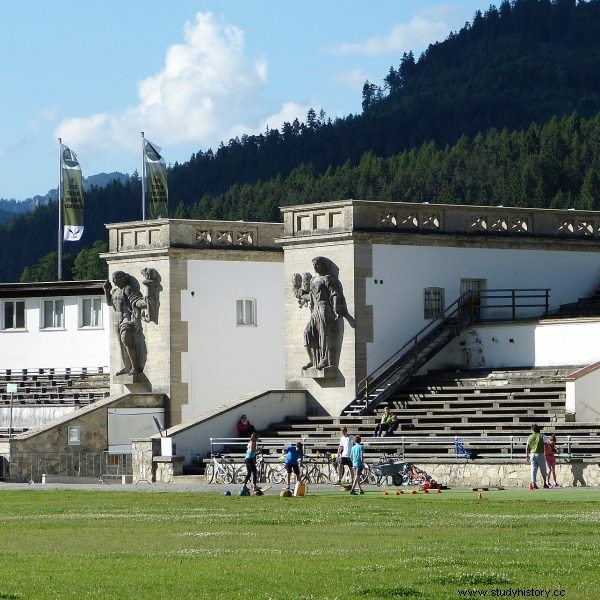
Winter Olympics Stadium
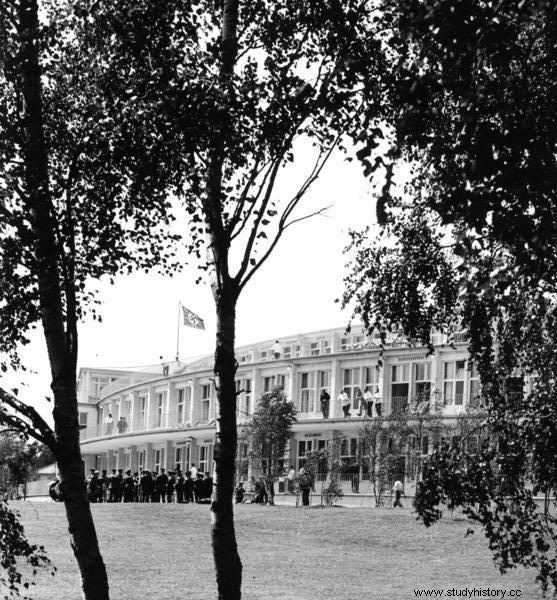
Berlin Olympic Village
